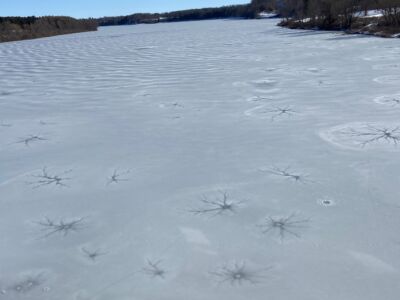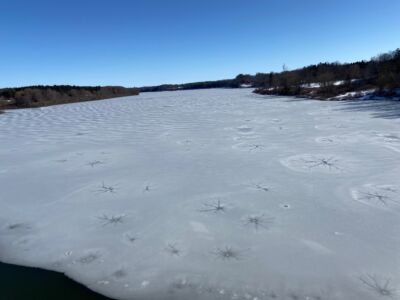Stargazing at Fanshawe Reservoir… During the Day?
Lake stars are not a very common occurrence, but Fanshawe Reservoir had the right conditions for their formation on Wednesday, March 8th. That morning, staff spotted this constellation of stars on the reservoir during routine maintenance of water level monitoring equipment located at the Fanshawe Dam. A few lucky hikers also were surprised by this starry display on their morning routes.

Few studies have been carried out on this phenomenon, but according to Victor Tsai, a geophysicist at Brown University and coauthor Yale physicist John Wettlaufer, lake stars, also known as “ice stars” or “windshield cracks” can form on thin ice that has a layer of snow on top of it.
Lake stars are created when warm water flows up from beneath a thin layer of ice, covered with a just-thick-enough coating of snow. The water temperature is promptly cooled by the snow, and new branches sprout outward, creating a star-like appearance.
It is a meteorological Goldilocks situation. “If the initial ice is not thin enough, the warm water from below has difficulty seeping through. If the snow layer is not thick enough, then the water seepage doesn’t occur.”
Lake stars appear either early in winter or later in the season as water body temperatures need to be slightly warmer than the ice and snow that gathers on top in order to form the stars.
Have you ever seen lake stars? If so, where?
Contact: Jessica Penz, Water Resources Technician


